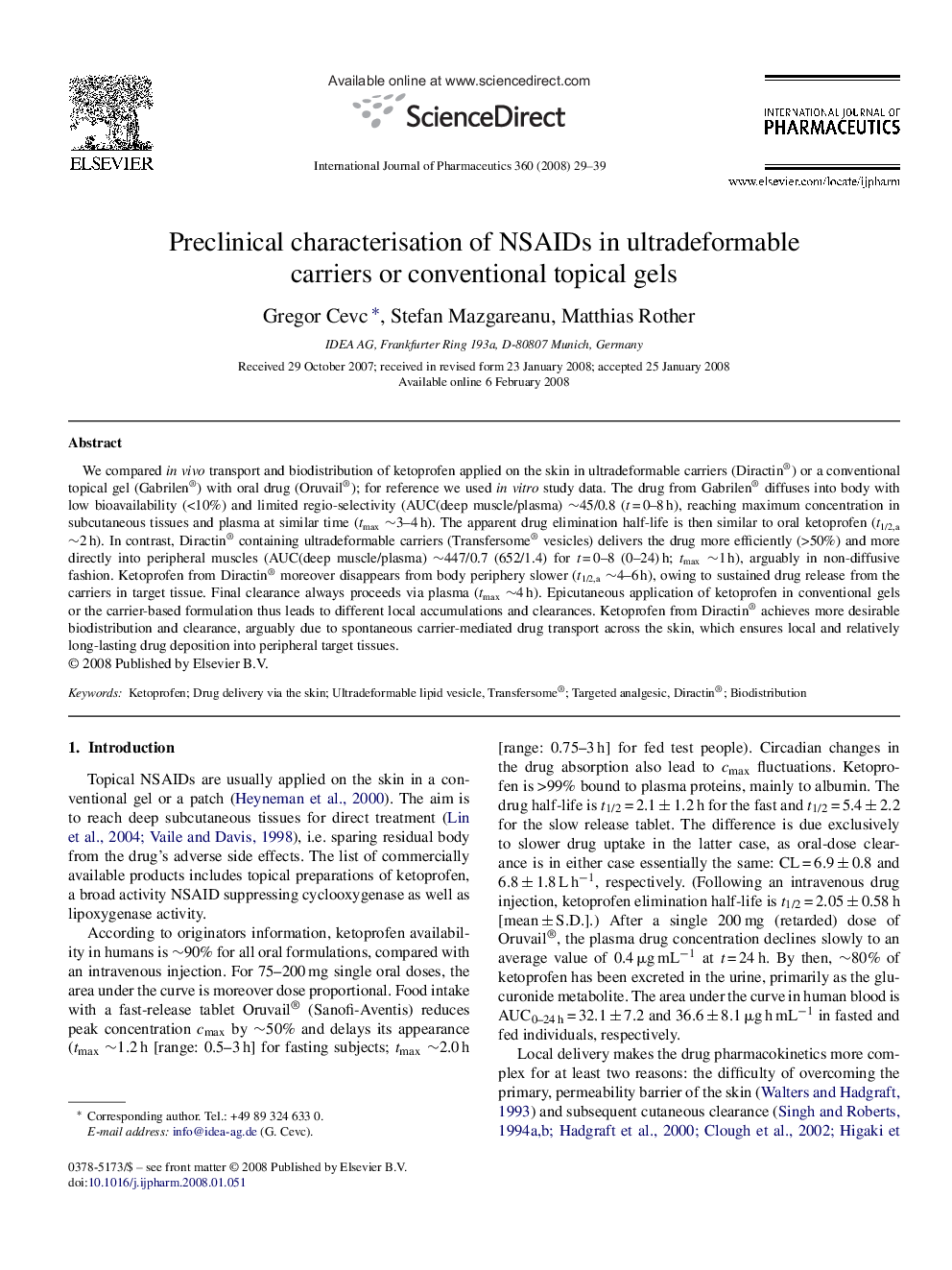| کد مقاله | کد نشریه | سال انتشار | مقاله انگلیسی | نسخه تمام متن |
|---|---|---|---|---|
| 2505090 | 1557486 | 2008 | 11 صفحه PDF | دانلود رایگان |

We compared in vivo transport and biodistribution of ketoprofen applied on the skin in ultradeformable carriers (Diractin®) or a conventional topical gel (Gabrilen®) with oral drug (Oruvail®); for reference we used in vitro study data. The drug from Gabrilen® diffuses into body with low bioavailability (<10%) and limited regio-selectivity (AUC(deep muscle/plasma) ∼45/0.8 (t = 0–8 h), reaching maximum concentration in subcutaneous tissues and plasma at similar time (tmax ∼3–4 h). The apparent drug elimination half-life is then similar to oral ketoprofen (t1/2,a ∼2 h). In contrast, Diractin® containing ultradeformable carriers (Transfersome® vesicles) delivers the drug more efficiently (>50%) and more directly into peripheral muscles (AUC(deep muscle/plasma) ∼447/0.7 (652/1.4) for t = 0–8 (0–24) h; tmax ∼1 h), arguably in non-diffusive fashion. Ketoprofen from Diractin® moreover disappears from body periphery slower (t1/2,a ∼4–6 h), owing to sustained drug release from the carriers in target tissue. Final clearance always proceeds via plasma (tmax ∼4 h). Epicutaneous application of ketoprofen in conventional gels or the carrier-based formulation thus leads to different local accumulations and clearances. Ketoprofen from Diractin® achieves more desirable biodistribution and clearance, arguably due to spontaneous carrier-mediated drug transport across the skin, which ensures local and relatively long-lasting drug deposition into peripheral target tissues.
Journal: International Journal of Pharmaceutics - Volume 360, Issues 1–2, 6 August 2008, Pages 29–39